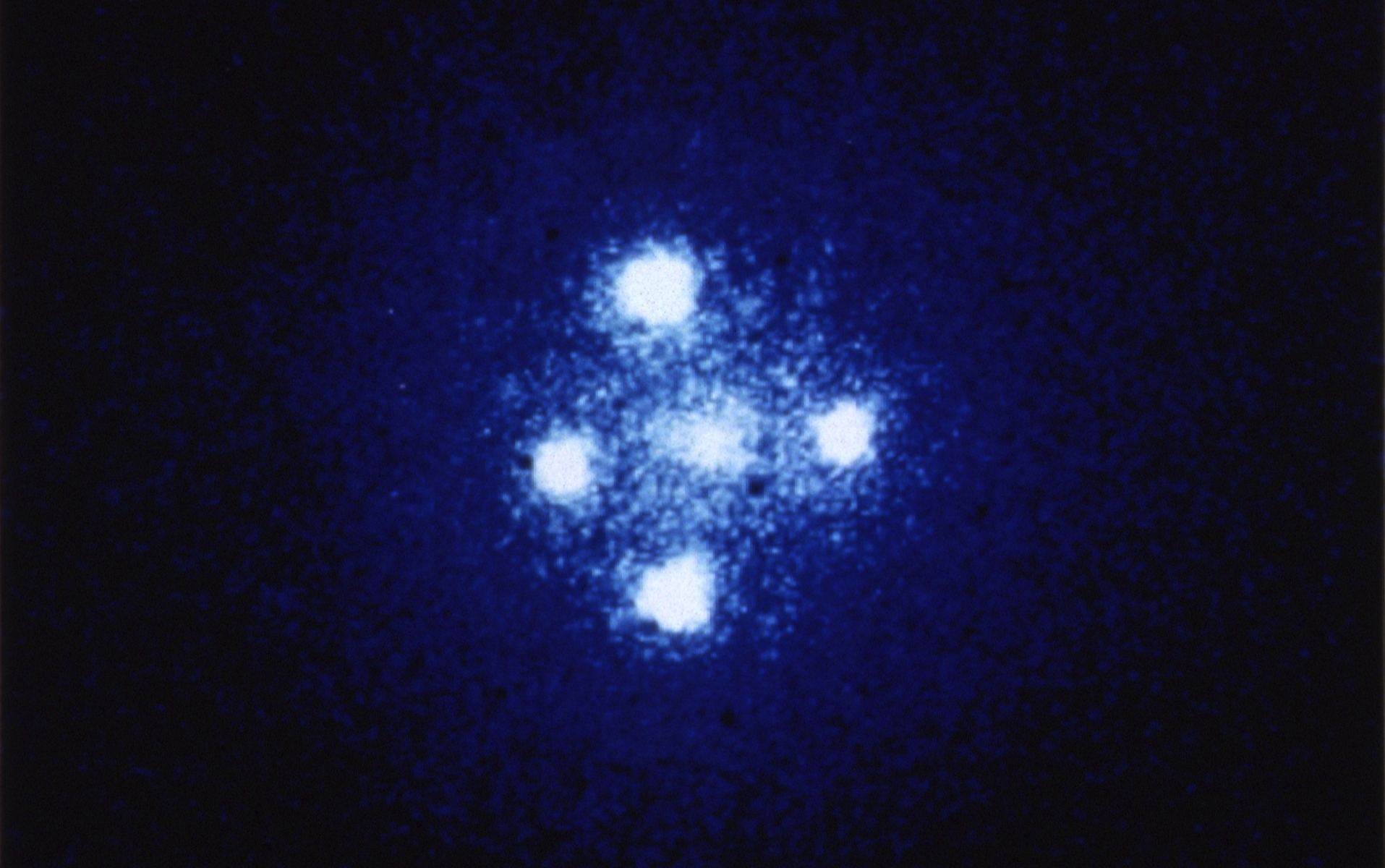Measuring cosmic distances is challenging, and astronomers rely on multiple methods and tools to do it – collectively referred to as the Cosmic Distance Ladder. One particularly crucial tool is Type Ia supernovae, which occur in binary systems where one star (a white dwarf) consumes matter from a companion (often a red giant) until it reaches the Chandrasekhar Limit and collapses under its own mass. As these stars blow off their outer layers in a massive explosion, they temporarily outshine everything in the background.
In a recent study, an international team of researchers led by Ariel Goobar of the Oskar Klein Centre at Stockholm University discovered an unusual Type Ia supernova, SN Zwicky (SN 2022qmx). In an unusual twist, the team observed an “Einstein Cross,” an unusual phenomenon predicted by Einstein’s Theory of General Relativity where the presence of a gravitational lens in the foreground amplifies light from a distant object. This was a major accomplishment for the team since it involved observing two very rare astronomical events that happened to coincide.
The team was made up of multiple researchers from the Oskar Klein Centre, the Kavli Institute for Cosmology, the Cahill Center for Astrophysics, the Infrared Processing and Analysis Center (IPAC), the Ecole Polytechnique Fédérale de Lausanne (EPFL), the Center for Interdisciplinary Exploration and Research in Astrophysics (CIERA), the Centre de Recherche Astrophysique de Lyon, NASA Goddard, the Space Telescope Science Institute (STScI), and multiple universities. Their research paper that describes their findings recently appeared in Nature Astronomy.
The initial detection was made using the Zwicky Transient Facility at the Palomar Observatory in California. This facility is named in honor of Fritz Zwicky, the astronomer who first theorized the existence of Dark Matter in the 1930s. A few weeks later, the team observed it with the adaptive optics (AO) at the W.M. Keck Observatory atop Maunakea, Hawaii, and the Very Large Telescope (VLT) at the Paranal Observatory in Chile. Based on the observed brightness, Goobar and his colleagues hypothesized that they were observing a strong lensing effect.
These follow-up observations and images acquired by the Hubble Space Telescope confirmed this theory, showing that the multiple-image lensing effect resulted from a galaxy in the foreground that magnified the supernova 25 times! This fortuitous discovery presents numerous opportunities for astronomers, including the ability to study SN Zwicky in greater detail and further investigate the mysteries of gravitational lenses. As Goobar explained in a Stockholm University press release:
“The discovery of SN Zwicky not only showcases the remarkable capabilities of modern astronomical instruments but also represents a significant step forward in our quest to understand the fundamental forces shaping our universe.”
The implications of this go beyond these two phenomenon, however. The study of Type Ia supernovae led astronomers to the realization that the cosmos is expanding at an accelerating rate. This discovery earned the discovery team the 2011 Nobel Prize in Physics, which was split between Saul Perlmutter (The Supernova Cosmology Project), and jointly between Brian P. Schmidt and Adam G. Reiss (The High-z Supernova Search Team). Therefore, observations of SN Zwicky could help astronomers address the mystery of what is driving this accelerated expansion.
“The extreme magnification of SN Zwicky gives us an unprecedented chance to study the properties of distant Type Ia supernova explosions, which we need when we use them to explore the nature of dark energy,” said Joel Johansson, a postdoctoral fellow at Stockholm University and a co-author on the study. Beyond that, it could also help astronomers pull back the veil on Dark Matter and inform theories about how the Universe will end (i.e., Big Crunch, Big Rip, Heat Death, etc.)
Further Reading: Stockholm University, Nature Astronomy

